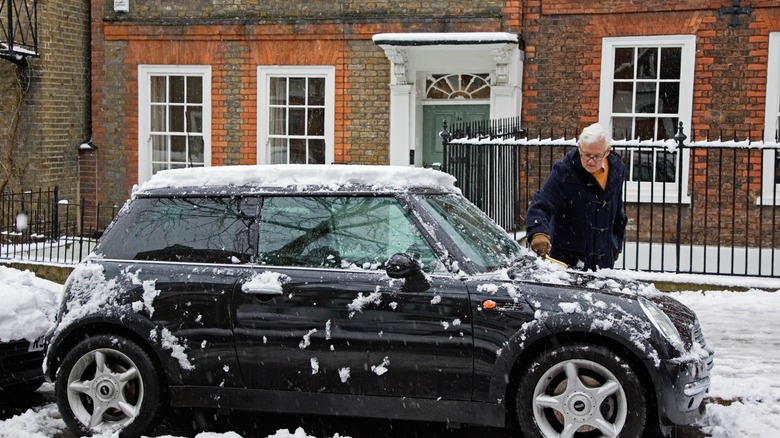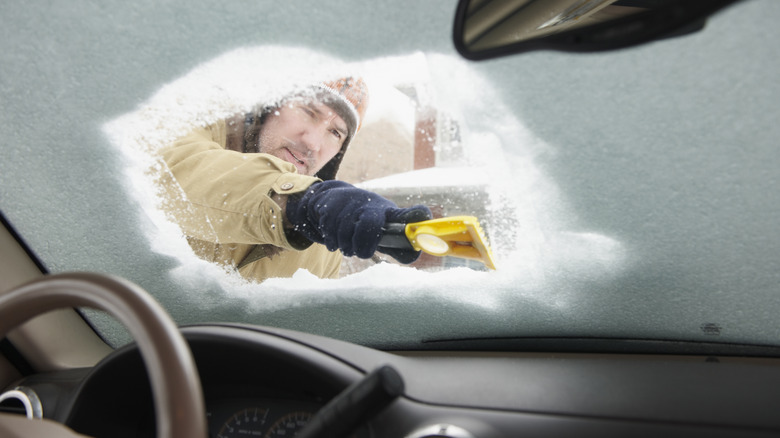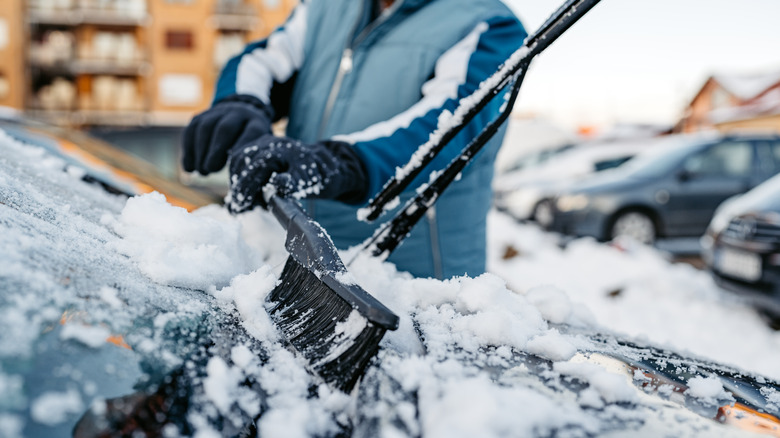Should You Lift Your Windshield Wipers Up When It Snows?
During winter, car owners in snow-prone areas are faced with the dilemma of either lifting or not lifting their windshield wipers. While either position has its advantages, many longtime drivers in these regions prefer to leave their cars with their wipers pointing up the moment it starts to snow. Though it may seem peculiar, the reasoning behind this practice is simple: It helps prevent wipers from freezing to the windshield, which could cause damage to the rubber squeegee. Additionally, defrosting car windows takes time, especially when it's very cold outside. Therefore, car owners who extend their wipers during winter may view this as a hack that saves them time.
However, this seemingly practical approach of lifting wipers is not without its critics. While most drivers swear by it, others question its effectiveness and potential drawbacks. For example, one could argue that it's okay to leave them as is since there's a safe way to defrost frozen windshields during the cold season. Before deciding if you should also extend your wipers when there's snow in the weather forecast, you should weigh the risks based on expert advice and your specific location's weather conditions.
The risks of the wiper blade dilemma
Not everyone agrees that lifting wipers is the best course of action during winter. Some experts, including Steven Ewing, director of editorial content at Edmunds, have cautioned against the practice, noting that high winds during winter storms can pose a risk to wipers left standing up. The wipers may bend or break due to strong gusts, leading to unnecessary repairs. Ewing advised (via Southern Living), "Instead, leave the wipers down, clear as much snow and ice off the windshield as possible, and let your car's defroster melt the remaining wintry mix."
On the other hand, after weighing the risks of both wiper setups, Harold Singh, material damage claims quality control manager at Erie Insurance, recommends lifting wipers. In a post featured on the company's blog, he wrote, "The risk is higher that you'll tear the rubber trying to free a frozen wiper blade. So leaving them up is probably your best bet..." Some GlassDoctor experts echo the same sentiments, noting that attempting to free frozen wipers without proper defrosting can result in torn rubber blades or even damage to the wiper motor.
Frequent lifting of windshield wipers can also cause wear on the springs that keep them functioning properly. Over time, this may decrease the lifespan of the wipers and result in reduced performance, which could lead to necessary repairs.
How to make the best decision for your vehicle
The overall decision to either lift your windshield wipers or not comes down to your local climate and personal preference. In regions where snow and ice are frequent but winds are moderate, lifting the wipers can be a smart precaution. However, if you're dealing with high winds or mild to strong weather during winter time due to your location, leaving them down and relying on other alternatives such as using a high-rated snow cover or regular snow and ice removal are options. The latter may be tedious, but it gets the job done and prevents damage to both the wipers and the windshield, especially if you are not sure of your snow removal skills and defrosting techniques.
If you choose to lift your wipers, it's important to do so correctly. Carefully lift each wiper arm at the hinge until it points upward after turning off your vehicle. Be gentle and stop as soon as you feel resistance since overexerting the hinge can cause damage or break the arm altogether. In the end, both lifting and not lifting wipers have their merits and drawbacks. What matters most is you are taking proactive steps to protect your vehicle and ensure safe driving in the frigid conditions of winter.


